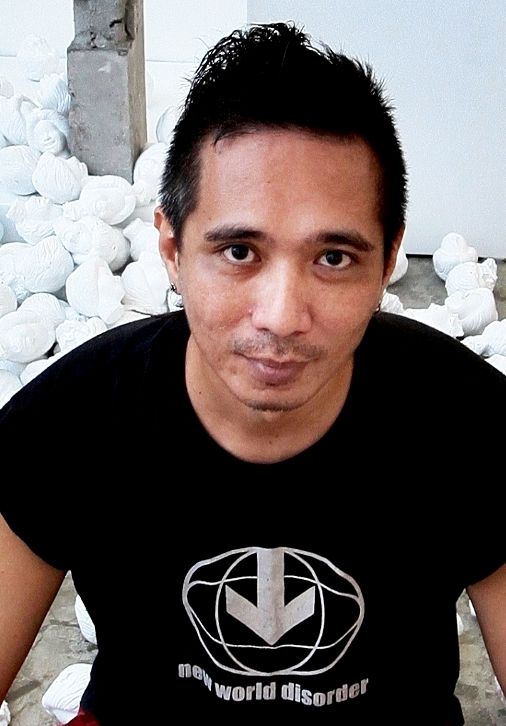At A Glance
- 'These materials become more than just remnants of a throwaway culture. They are repurposed into works that force us to reconsider our habits and values.'

Renowned for his bold and provocative works, Mideo M. Cruz transformed surplus materials into thought-provoking art in his latest exhibit “Salvaged Statements.”
His pieces urged the audience to reflect on systems of excess that pervade temporary life. His collection, constructed from discarded objects, thrifted finds, and items sourced from secondhand markets, critiqued the dominance of consumer culture, corporate exploitation, and environmental degradation.

The exhibit was a continuation of Cruz’s ongoing exploration of what he calls “appropriating excess.” In this approach, Cruz took materials cast aside, reinterpreted them through his creative lens, and gave them new life and narrative.
“These objects are byproducts of overproduction, a crisis central to a contemporary culture,” Cruz explains. “By appropriating and transforming them, I aim to critique overproduction itself, imbuing the original objects with new, meaningful narratives and challenging their initial context.”

This practice was evident throughout his exhibit, where Cruz manipulated salvaged materials to offer a powerful commentary on the consequences of unchecked consumption. Each piece reclaimed the histories embedded in the discarded objects, narrated stories of exploitation and environmental harm. In doing so, Cruz elevated waste into art that both critiqued—and envisioned alternatives to—the systems of excess.
“My creative process begins with the material itself,” says Cruz. “When I encounter an existing object, my imagination immediately starts exploring the infinite possibilities of how I can make it speak.”
His art is not just about recycling. It’s about revealing the cultural and economic narratives embedded in each item. His method mirrored the relationship between human beings and the systems that shape their lives – especially the often invisible ones of consumption and exploitation. By placing these reworked objects within a gallery space, he invited the viewers to confront their own roles in perpetuating or challenging these systems.

“The context of my work varies depending on the original object. I reconstruct each piece based on the insights I can draw from the object itself. These materials become more than just remnants of a throwaway culture. They are repurposed into works that force us to reconsider our habits and values. This process mirrors our present-day lifestyle, highlighting the tension between need and excess,” he explains.
Cruz’s work has always been rooted in social commentary and “Salvaged Statements” was no different. Through his imaginative use of materials, Cruz highlighted the environmental strain caused by overproduction and consumption while also shedding light on the economic inequalities that systems perpetuated.

The exhibit also served as a reflection of contemporary life. In the exhibit, the objects once deemed useless and discarded now became symbols of that tension, forcing viewers to reevaluate their relationship with material goods and consumption.
Working with salvaged materials is not without its challenges. Cruz noted that one of the primary difficulties lay in sourcing the right materials for each piece. “I am limited by the availability of the materials I can gather – I cannot easily reinvent or fabricate them,” he says. This constraint became both a challenge and a creative driver for Cruz, motivating him to work within the boundaries of what he could collect.

This limitation also fueled Cruz’s imagination, pushing him to craft pieces that are as resourceful as they are evocative. “The most rewarding part is the sense of completion that comes when an artwork is finished,” he intimates. “There’s a climactic moment, almost like a personal summit, where the satisfaction of seeing the idea realized is overwhelming.”
Although each piece in “Salvaged Statements” stood on its own, Cruz viewed the exhibit as a cohesive body of work. “There’s not one piece in particular that holds more significance than the others. They all carry a part of me, a reflection of my experiences and insights,” he muses. Each work, shaped by the materials it reclaimed, represented a facet of Cruz’s worldview and, together, they form a collective statement about the world we live in.

‘Salvaged Statements’ by Mideo Cruz ran until early October at The Crucible Gallery, SM Megamall, Mandaluyong City, Philippines.